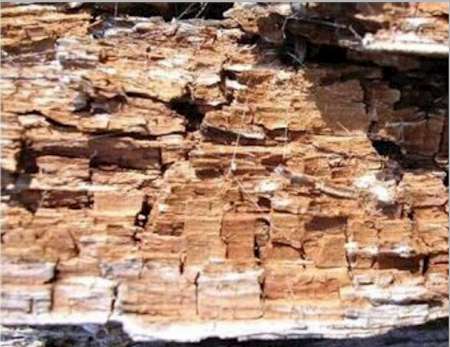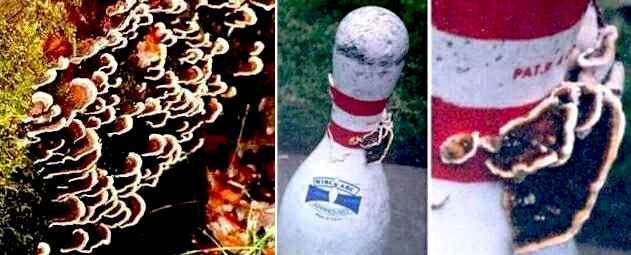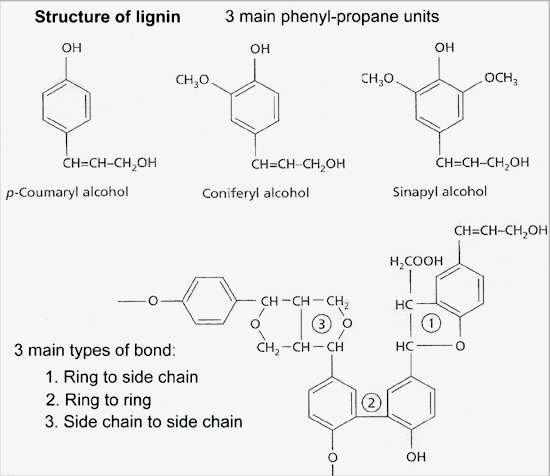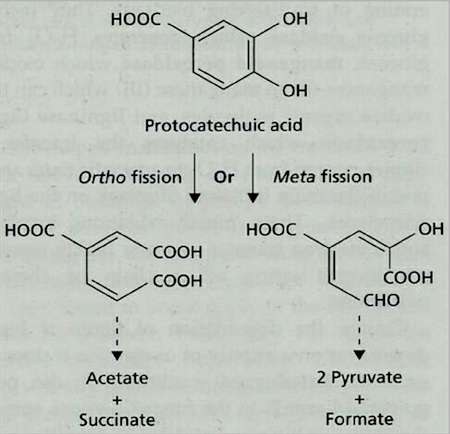..
MORE IMAGES FROM CHAPTER 11: FUNGAL ECOLOGY - SAPROTROPHS
Fig 11.19 Part of a pine stump showing the characteristic brick-like decay pattern caused by brown-rot fungi.[© Jim Deacon]
Fig 11.20 Two common Ascomycota that cause white rots. Left: Xylaria hypoxylon, the ‘candle snuff’ fungus often seen on rotting stumps. Right: Xylaria polymorpha (‘dead man’s fingers’) [© Jim Deacon] CLICK HERE FOR FURTHER IMAGES.
Fig
11.21 Bracket-shaped fruitbodies of Coriolus
versicolor on the base of a rotting tree stump; and
in a less familiar setting. Is nothing sacred?!
Fig 11.22 Structural components of lignin, showing the three main phenyl-propane units and three of the main types of bond that link them. Note that only a small part of the lignin molecule is shown. [© Jim Deacon]
Fig 11.23 Patterns of opening of aromatic rings. Left: during lignin breakdown, by the process of ortho fission. Right: during the breakdown of pesticides and other xenobiotics, by meta fission. Initially the ring is substituted with two hydroxyl groups on adjacent carbon atoms. Then it is opened either between these two carbons (ortho fission) or adjacent to one of them (meta fission, which is a plasmid-encoded function of bacteria). [© Jim Deacon]
Fig 11.24 Left: part of a decaying beech stump showing dark zone lines at the junctions between mutually incompatible fungal colonies. Right: a decorative wooden bowl made from spalted (zone-lined) beech wood. [© Jim Deacon] |
|||||||||||





